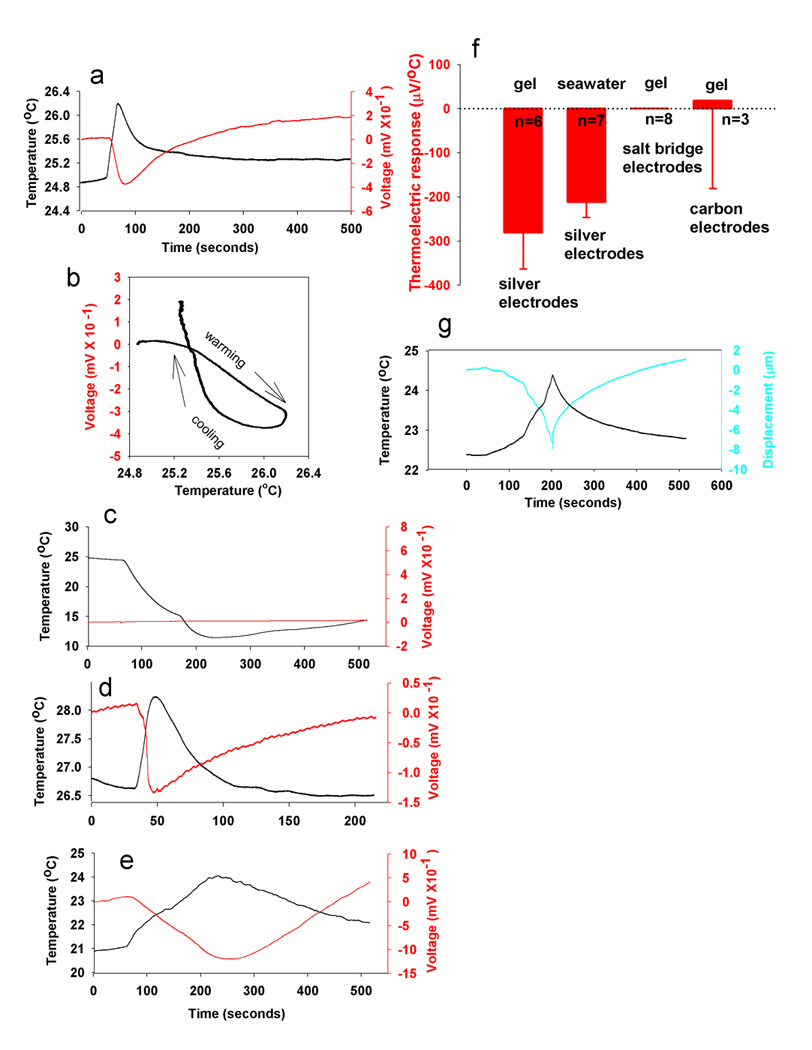Fig. 2.

The reported thermoelectric semiconductor properties of gel in ampullae of Lorenzini [2] are measurement artifacts arising from electrochemical reactions at the measurement electrodes. (a) Thermal gradients changed the voltage between two silver electrodes in the gel. (b) The thermoelectric response was sensitive to small temperature changes and showed hysteresis. (c) No thermoelectric response was detected when nonmetallic measurement electrodes (salt bridges) were used. (d) Heating or cooling the point where the silver wire contacts the salt bridge mimicked the thermoelectric response, even though this does not cause a temperature gradient in the gel. (e) The thermoelectric response can be measured with silver electrodes in ordinary seawater with 2% agar. (f) The thermoelectric response (maximal slope from voltage/temperature plots), is not significantly different in seawater and extracellular gel when measured with silver electrodes. (g) Temperature-dependent changes in gel viscosity can be measured as swelling and shrinking of the gel beneath a photonic displacement sensor (MTI 2000), but this is not likely to be a biologically relevant mode of thermoreception as similar changes are seen in seawater/agar.
